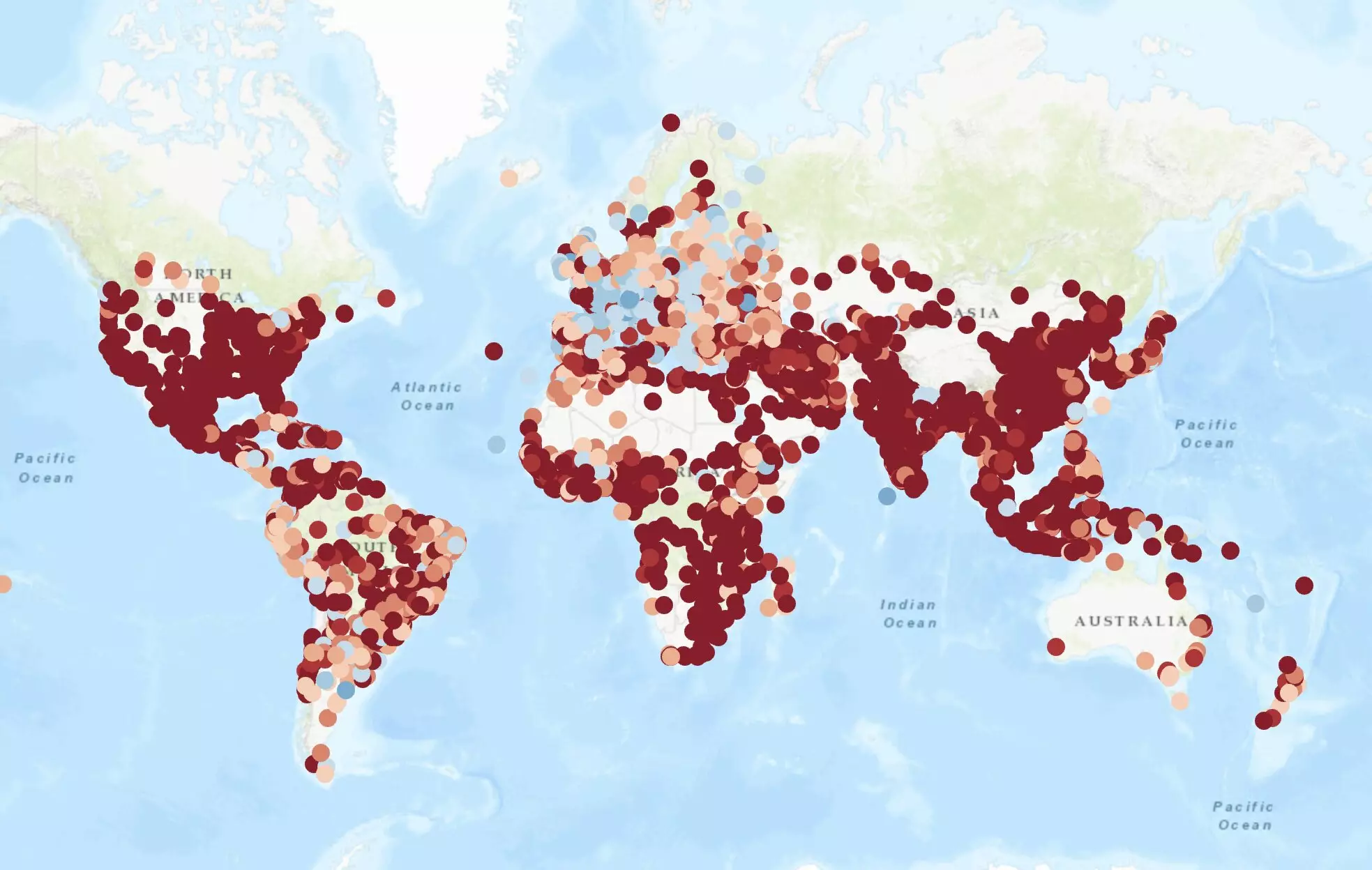The concept of a “15-minute city” has surged in popularity among urban planners and architects, proposing that all essential services should be reachable by a 15-minute walk or bike ride. This framework aims to tackle significant urban challenges, including traffic congestion, high pollution levels, social isolation, and overall quality of life. As the global trend of urbanization continues—with over half of the world’s population residing in cities—the need for innovative urban strategies has never been clearer. Researchers have recently quantified how various urban areas align with this ideal, unveiling critical insights into the disparities prevalent in city living.
A pivotal study, recently published in *Nature Cities*, spearheaded by Vittorio Loreto, highlights the disparities and inequalities associated with access to essential services in urban locales. Loreto, who serves as a professor at Sapienza University of Rome and director of the Sustainable Cities Research Line at Sony Computer Science Laboratories in Rome, has led an exploration into urban accessibility on a global scale. Their research involved creating an accessible online platform allowing users to investigate cities worldwide through the lens of the 15-minute city model.
The examination of these urban areas reveals significant differences in service accessibility. For instance, cities that excel in providing necessary services often exist alongside neighborhoods that lack such resources entirely. The inequities observed by the research team underscore the growing divide between affluent and less privileged areas, where the latter may require extensive travel just to access basic commodities and services.
In the study’s findings, the authors pointed out that cities in Europe, like Vienna, illustrate how well-structured urban planning can enhance accessibility. However, many urban centers in the United States, Africa, and parts of Asia face substantial barriers in achieving the accessibility benchmark set by the 15-minute city ideal. The research raises important questions about the socio-economic dynamics at play, particularly concerning which demographics benefit from concentrated services and how this shapes urban living conditions.
Additionally, the study explored the concept of redistributing resources across urban landscapes. Would a more equitable distribution of amenities improve access for all citizens? The research team proposed the development of a relocation algorithm designed to determine how urban planning could be optimized to reduce inequalities. This innovative approach seeks to simulate the potential impact of varying the distribution of amenities, aiming to understand whether enhancing transportation systems is necessary or if reallocating existing resources can achieve a more equitable urban environment.
Redefining Urban Planning Strategies
The study emphasized the need for urban planners to rethink their approach to developing urban spaces. The existing framework surrounding the 15-minute city may not adequately address the distinct needs present in different urban settings. Loreto’s findings suggest that many cities may not be realistically able to consider proximity to essential services as a viable model without substantial alterations in planning paradigms.
As a solution, the researchers propose the adoption of value-based urban planning, which takes into account local populations, socio-economic disparities, and cultural factors. This new model prioritizes customized solutions, ensuring that city planning is tailored to meet the unique needs of its inhabitants, rather than adhering to generic frameworks that may be unsuitable across different contexts.
Transitioning towards a more equitable urban model carries significant advantages. Increased accessibility to essential services—such as healthcare, education, cultural amenities, and job opportunities—can foster improved community engagement and social cohesion. Moreover, it can nurture a more informed and active citizenry, capable of contributing to the diverse tapestry of creativity that cities embody.
By prioritizing the creation of equitable urban spaces, policymakers and urban planners can enhance the overall quality of life in cities, reduce environmental footprints, and mitigate the growing issues of isolation and inequality. Ultimately, while the 15-minute city offers a compelling framework, its true potential lies in fostering deep-seated, value-oriented changes that address the tangible needs of urban populations.
The 15-minute city concept serves as a valuable touchstone in discussions about urban planning and the necessity for equitable access to services. Through careful analysis of existing disparities and innovative approaches to urban distribution, we can envision cities that genuinely cater to the diverse needs of their populations. Moving forward, it is imperative that we prioritize context-specific solutions, ensuring that all city dwellers can thrive within their urban environments, thereby laying a foundation for more sustainable and inclusive urban futures.


Leave a Reply